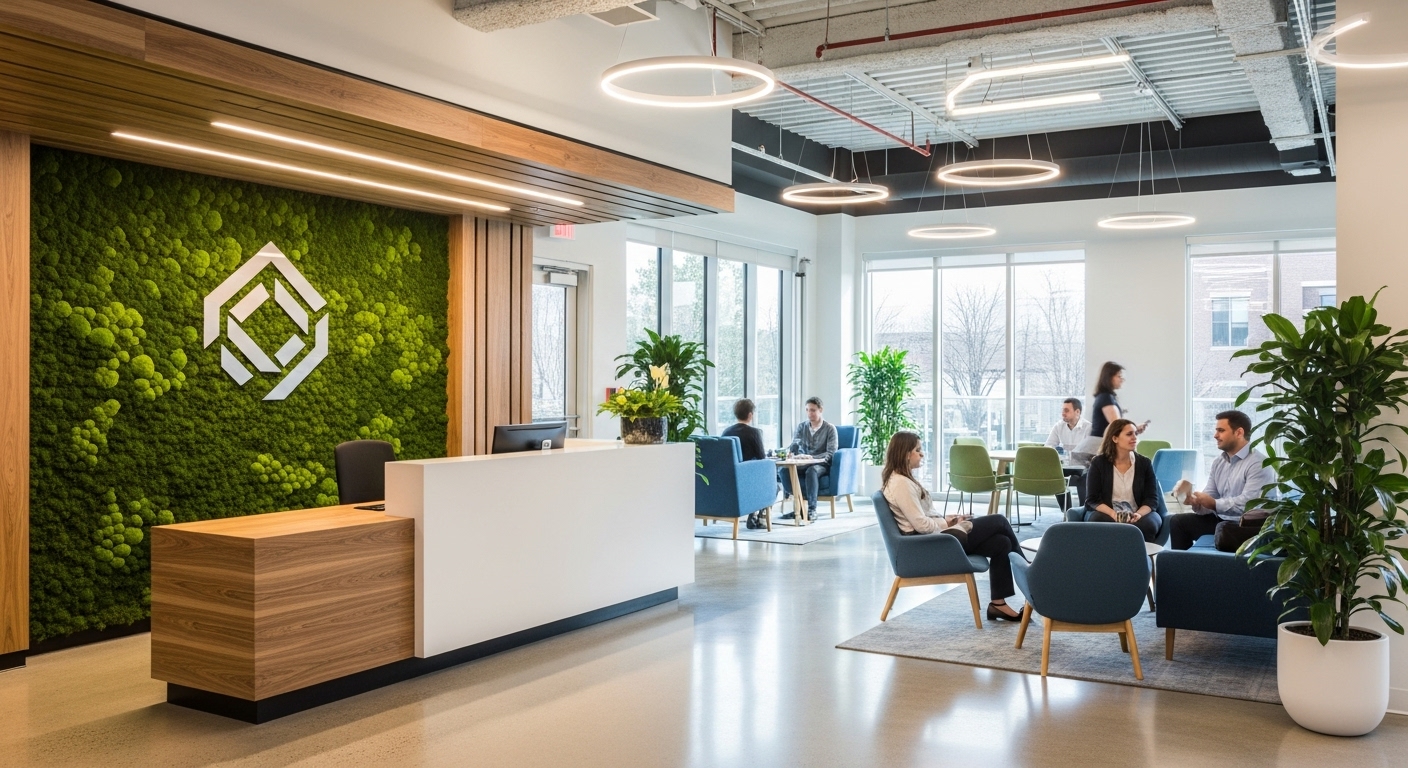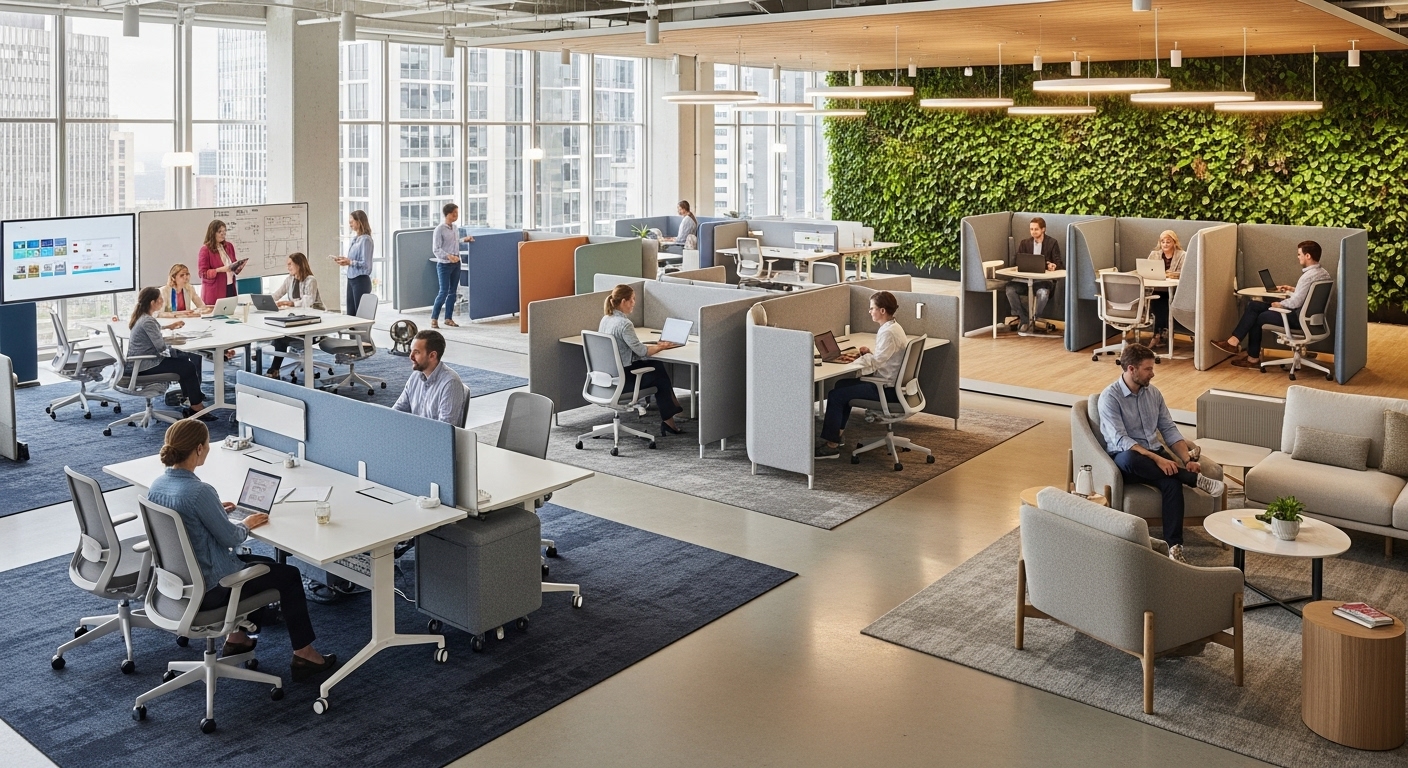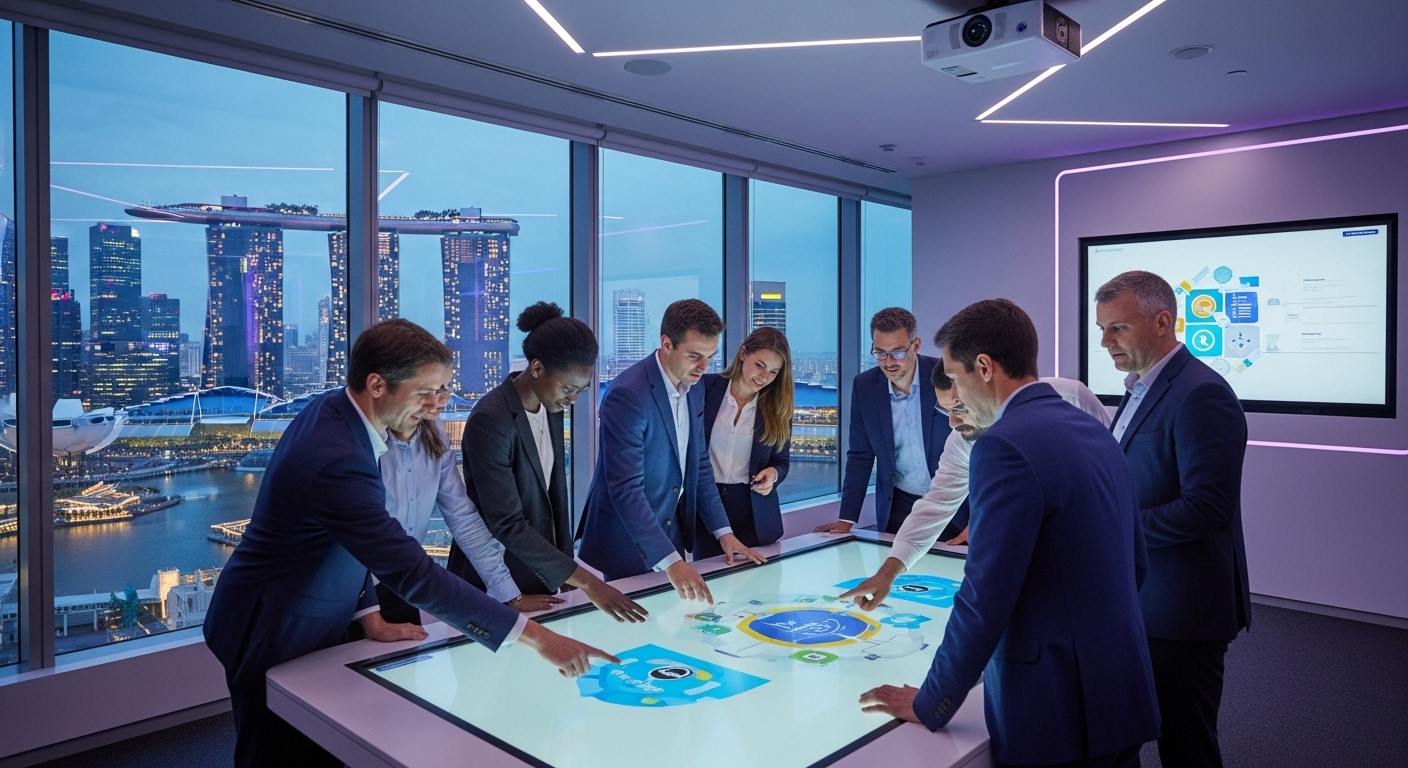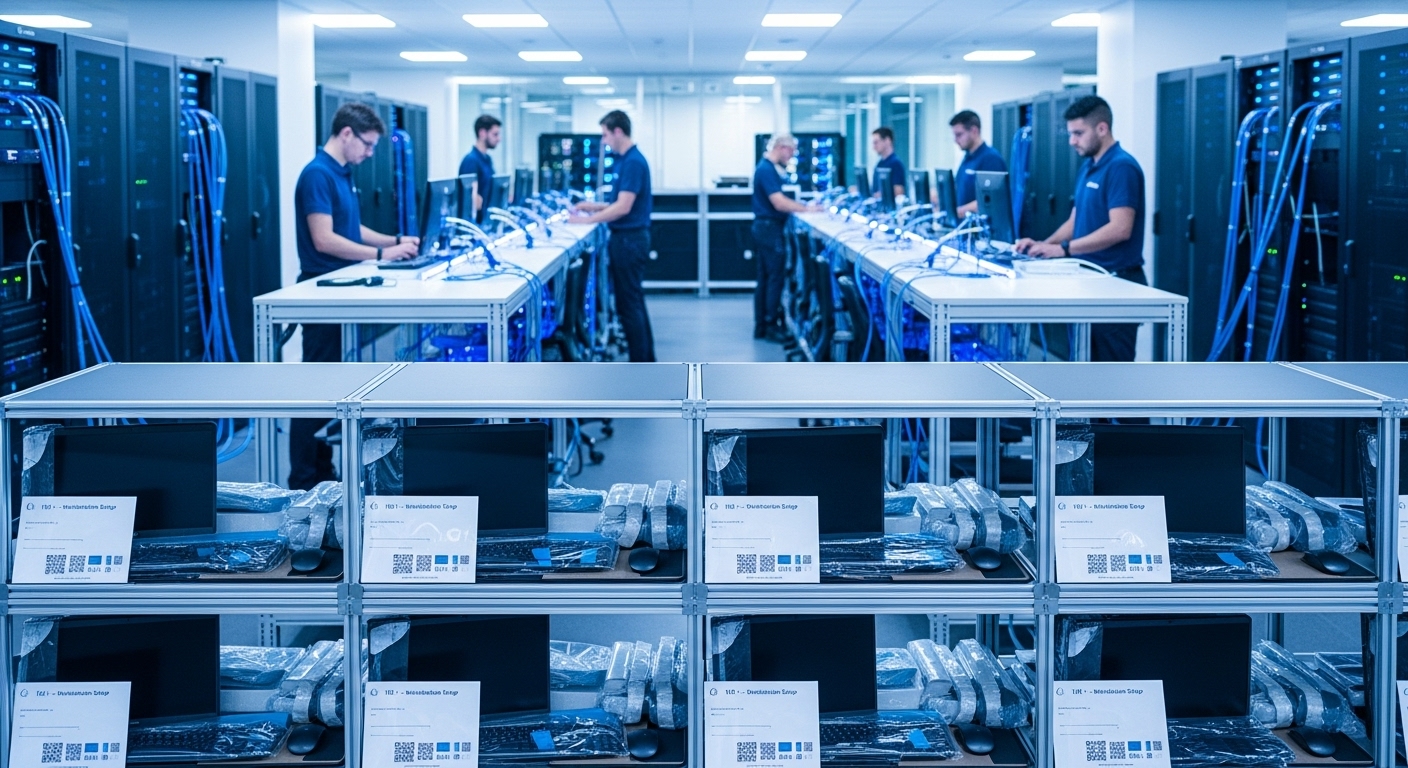In an age where brand identity is paramount, the physical workspace has evolved from a mere operational necessity into a powerful strategic asset. It’s no longer enough to simply hang a logo in the lobby; today’s leading companies understand that their office is a living, breathing embodiment of their brand. This concept, the ‘brand ecosystem,’ treats the workspace as an immersive environment where culture, values, and mission are communicated not just through visuals, but through every sensory and spatial experience. As businesses compete fiercely for talent and customer loyalty, crafting a space that authentically reflects brand identity has become a critical differentiator. It’s about creating an environment that resonates with employees on a cultural level and tells a compelling story to every client who walks through the door. This article explores how to move beyond surface-level decoration to cultivate a true brand ecosystem, transforming your office into a dynamic hub of identity and connection. We will delve into defining your spatial brand, engaging the senses, integrating technology, and ultimately, building a workplace that powers your people and your business.
Beyond the Logo: Defining Your Spatial Brand Identity
The foundation of a powerful brand ecosystem is a clearly defined spatial brand identity. This process begins long before selecting furniture or paint colors; it starts with a deep dive into your organization’s core. The first step is to distill your mission, vision, and values into a tangible design language. Ask critical questions: If your brand were a physical space, what would it feel like? Is it innovative and edgy, suggesting sleek lines, raw materials, and dynamic lighting? Or is it stable and trustworthy, calling for warm woods, classic furniture, and a sense of permanence? This translation of abstract values into a physical concept is the cornerstone of authentic spatial branding. For instance, a brand that values transparency might prioritize glass walls and open sightlines, while a company focused on deep, collaborative work might design a series of intimate, acoustically-sound pods. This identity should inform every subsequent decision, from the overall floor plan to the texture of the upholstery. It’s about creating a cohesive narrative that an employee or visitor can intuitively understand. The goal is to establish a set of design principles that act as a filter for all choices, ensuring every element, no matter how small, contributes to a unified and powerful brand statement. When done effectively, the space itself becomes a constant, subtle reinforcement of what the company stands for, fostering a deeper sense of belonging and purpose among employees.
The Sensory Palette: Engaging All Five Senses in Your Workspace
A truly immersive brand ecosystem engages people on multiple sensory levels. While vision is the most obvious, the other senses play a crucial, often subconscious, role in shaping our perception of a space. Start with the auditory environment. An office focused on collaboration might have an energetic, ambient soundscape in common areas, while employing advanced acoustic paneling in focus zones to communicate a respect for concentration. Tactile experiences are also vital. The choice of materials—the cool smoothness of a marble reception desk, the warm texture of a wooden conference table, the soft fabric of lounge chairs—sends powerful messages about quality, comfort, and character. Olfactory branding, or scent marketing, is another potent tool. A subtle, custom scent diffused in the lobby can create a memorable first impression and immediately establish a specific mood, whether it’s calming lavender for a wellness brand or an invigorating citrus for a tech startup. Even the sense of taste can be integrated through a curated selection of coffee, tea, and snacks in the kitchen that reflects the brand’s identity—perhaps locally sourced and artisanal for a community-focused company. By orchestrating a multi-sensory experience, you move beyond a space that is simply seen and create one that is truly felt, forging a much deeper and more lasting emotional connection to the brand.
Weaving a Digital Thread: Integrating Technology with Brand Narrative
In our digitally-native world, technology is not just a utility but a critical medium for brand expression. Integrating technology thoughtfully within your physical space can amplify your brand narrative and create a seamless, modern experience. This goes far beyond simply having fast Wi-Fi. Consider interactive digital displays in common areas that showcase company milestones, employee stories, or real-time project dashboards, reflecting a culture of transparency and celebration. Even the Wi-Fi network name and login portal can be branded opportunities. Smart room booking systems that are intuitive and efficient can subtly communicate a brand value of respect for employees’ time. For client-facing areas, technology can create ‘wow’ moments. An interactive wall in the lobby that tells the company’s history or a tablet in a meeting room that allows visitors to explore product demos can make the brand feel innovative and forward-thinking. Furthermore, environmental controls powered by smart technology can reflect a brand’s commitment to sustainability and employee well-being by optimizing lighting and temperature. The key is to ensure the technology feels integrated and purposeful, not intrusive or gimmicky. It should support the overall brand ecosystem by making the workspace smarter, more engaging, and a clearer reflection of a company that is in tune with the future.
The Employee Experience as Brand Embodiment
Your employees are your primary brand ambassadors, and the design of their workspace has a profound impact on their ability to embody and project the brand’s values. A well-designed brand ecosystem empowers your team by providing an environment that supports their work and reinforces the desired culture. If your brand prides itself on innovation and collaboration, the space must facilitate it. This means creating a variety of settings—from open, energetic brainstorming zones with whiteboards and flexible seating to quiet, library-like areas for deep focus. This variety communicates that the company understands and supports different work styles. Wellness is another powerful brand message. Incorporating elements like biophilic design (plants and natural light), a dedicated wellness room, or an on-site fitness area demonstrates a genuine investment in employee health, making the company a more attractive place to work. The design should also remove friction from daily tasks. An intuitive layout, ample storage, and easily accessible resources show respect for employees’ time and effort. Ultimately, the workspace should feel like a tool that helps them succeed, not an obstacle to overcome. When employees feel supported and aligned with the company culture as expressed through their physical environment, they are more engaged, more productive, and more authentic representatives of your brand to the outside world.
Materiality and Message: Choosing Finishes That Speak Your Language
Every material, texture, and finish in your workspace carries an implicit message. Strategic material selection is a sophisticated way to communicate your brand’s personality and values without saying a word. Consider the psychological impact of different materials. Polished concrete floors, exposed brick walls, and visible ductwork can convey an industrial, unpretentious, and startup-like ethos. In contrast, rich hardwoods, brushed brass fixtures, and natural stone surfaces like marble or granite speak to tradition, luxury, and permanence. A tech company aiming to project an image of cutting-edge innovation might lean on sleek metals, glass, and high-performance composites. A brand focused on sustainability can make a powerful statement by using reclaimed wood, recycled materials, and low-VOC (Volatile Organic Compound) paints, tangibly demonstrating their commitment to the planet. The texture is just as important as the material itself. A rough, natural texture can feel authentic and grounded, while a smooth, polished surface can feel refined and futuristic. The key is to create a palette of materials that is both cohesive and consistent with your brand identity. This careful curation ensures that the physical environment is constantly reinforcing your core message, adding a layer of depth and authenticity to your brand ecosystem that generic, off-the-shelf finishes can never achieve.
Measuring the Unmeasurable: Gauging the ROI of a Branded Space
Investing in a comprehensive brand ecosystem for your workspace is a significant undertaking, and stakeholders will inevitably ask about the return on investment (ROI). While some benefits are qualitative, their impact can be measured through various quantitative and qualitative metrics. One of the most direct measures is talent acquisition and retention. Track metrics like time-to-hire, offer acceptance rates, and employee turnover rates before and after the redesign. A compelling, brand-aligned workspace is a powerful recruiting tool. Employee engagement and satisfaction are also critical indicators. Use regular pulse surveys and anonymous feedback tools to gauge how the new environment affects morale, productivity, and feelings of connection to the company culture. Look for comments that specifically mention aspects of the new design. For client-facing spaces, the impact can be measured through client feedback, conversion rates, and even their willingness to visit your office for meetings. A space that impresses clients can directly influence business development and strengthen partnerships. Brand perception can be tracked through social media mentions, press coverage, and brand sentiment analysis. A thoughtfully designed office often becomes a point of pride that employees share online, generating positive organic marketing. By combining these different data points, you can build a compelling case that demonstrates how a strategic investment in your physical space translates into a stronger culture, a more attractive employer brand, and a healthier bottom line.
In conclusion, branding your physical space is far more than an exercise in interior design; it is the strategic cultivation of a brand ecosystem. By moving beyond the superficial application of logos and colors, you create an immersive environment that communicates your company’s core identity at every turn. This involves a deliberate process of defining your spatial identity, engaging all five senses, and seamlessly integrating both digital and physical touchpoints. Such an environment does more than just house your operations—it actively shapes your culture, empowers your employees, and tells a compelling, multi-dimensional story to every client and visitor. The return on this investment is measured not only in aesthetics but in tangible business outcomes: enhanced talent acquisition and retention, higher employee engagement, and a stronger, more authentic brand presence in the market. Ultimately, a well-executed brand ecosystem transforms your workspace from a cost center into a strategic asset that builds connection, fosters loyalty, and drives your mission forward.





